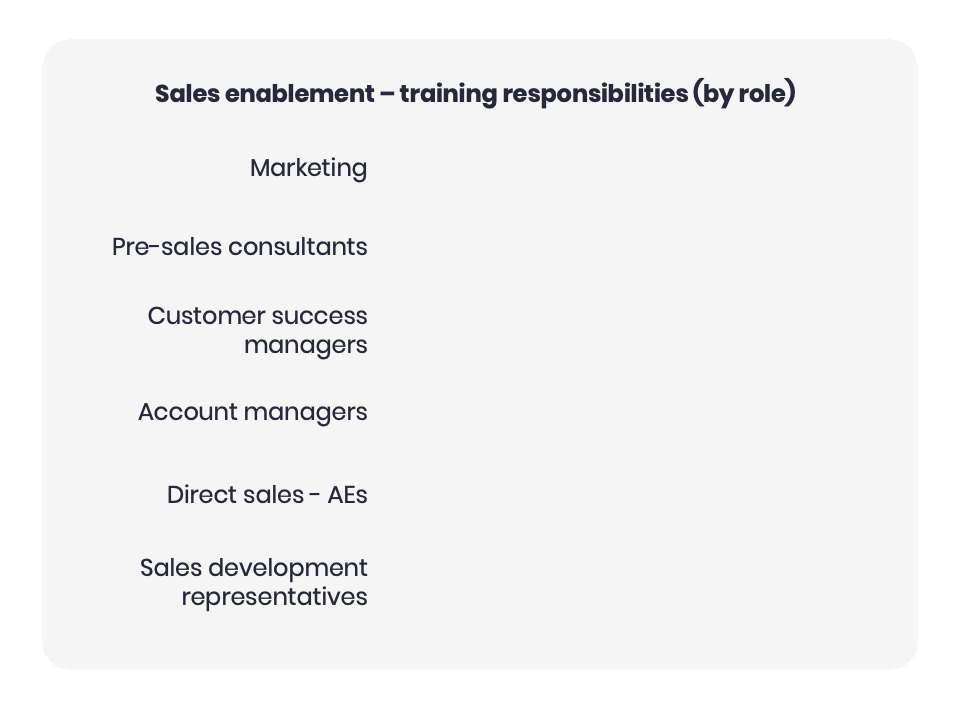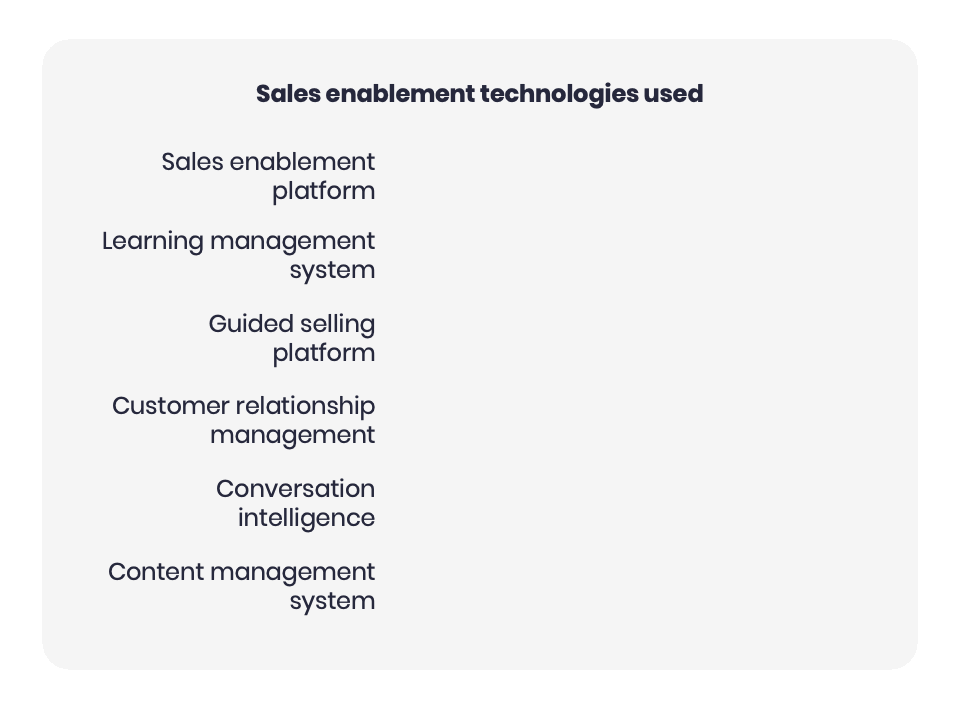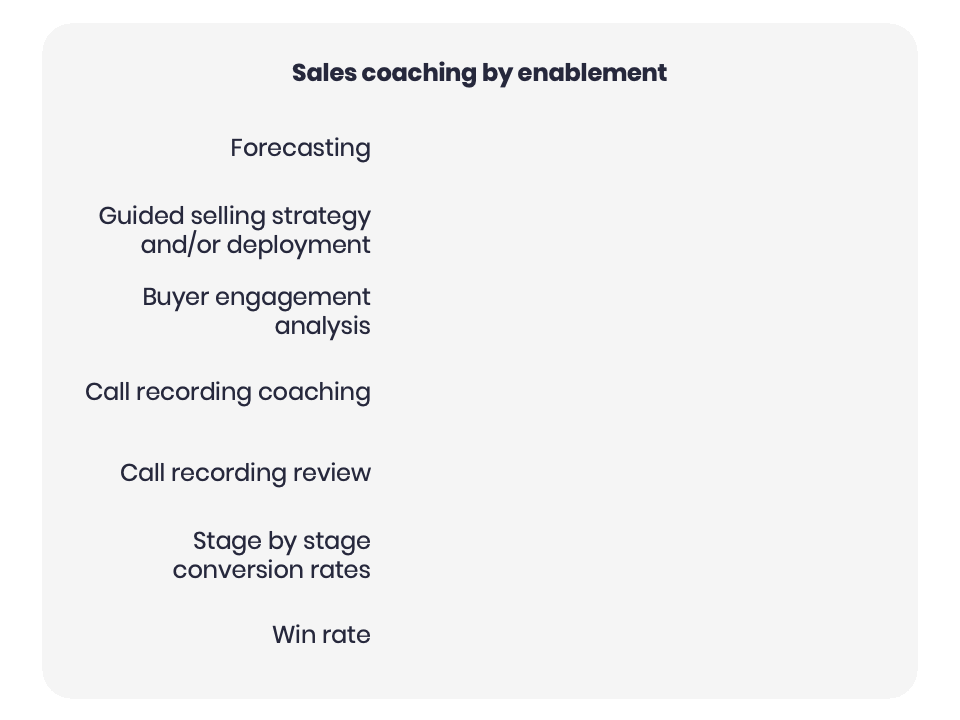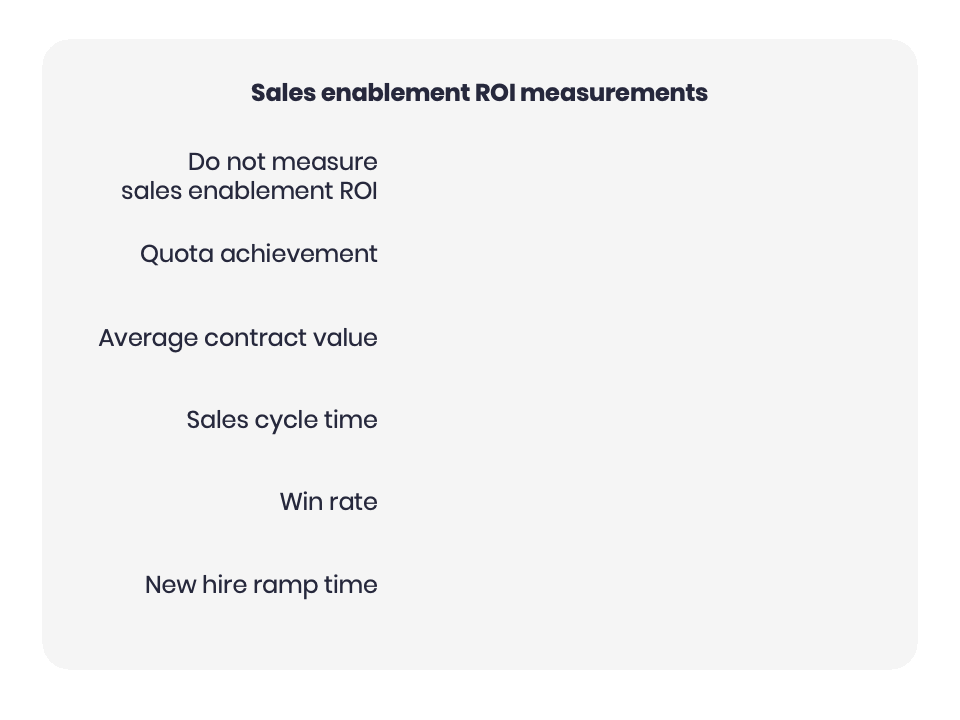Curious how your sales enablement strategy stacks up? In May 2022, Mediafly, in partnership with RevOps Squared, conducted a Future of Revenue Enablement study, a survey of more than 300 B2B enterprises designed to uncover best practices in Sales Enablement across processes, tools, management, and measurement.
As the current economic downturn forces B2B companies to reimagine growth strategies, this research identifies key areas of opportunities you can strategize around to set your teams up for success in 2023.
Here’s what we uncovered.
Sales enablement strategy vs. revenue enablement approach
While 58% of companies surveyed report having some form of sales enablement, only 19% acknowledge the presence of revenue or go-to-market enablement. So what’s the difference?
Sales enablement is the practice of empowering your sales reps with the tools, content, and processes they need to engage buyers.
Revenue enablement focuses on enabling the entire go-to-market team — from marketing to presales to sales to customer success — with the tools, content, and processes required to predict, coach, engage, and execute across the customer lifecycle.

Currently, only 21% of companies surveyed include Customer Success in their sales enablement strategy and just 10% extend support to Marketing teams. As companies face increasing pressure to retain customers and grow in this challenging economic environment, there is a significant opportunity to expand enablement to complete revenue teams, improving customer experience across every touchpoint, from research to onboarding, support to expansion.
Sales enablement technology

While most companies surveyed have a sales enablement function, only 19% leverage a sales enablement platform. 65% of companies report taking a value-based approach to sales, but only 33% have deployed an ROI calculator.
Today, sales enablement teams prioritize basic account, contact, and activity tracking (e.g., CRM) solutions over data-based technology meant to improve sales execution (e.g., guided selling).
It’s also interesting that while most companies invest in conversation intelligence solutions, only 22% of sales enablement functions use CI to coach sales reps — a practice proven to positively impact stage-by-stage conversion rates.
To improve sales performance, sales enablement teams need to stop over-indexing on systems of record and start prioritizing the use of systems of engagement and execution.
Sales training & coaching
The research also shows little consistency in sales training and coaching across respondents’ sales enablement strategies.

As mentioned, few companies perform call recording coaching (14%) and call recording review (19%) as part of sales onboarding and education, despite their organizations likely having invested in the technology to do so.
Where no sales enablement function exists, sales training responsibility is split across the organization. Interestingly, in those organizations where no sales enablement is present, sales is responsible for training sellers only 33% of the time. 15% of the time, the responsibility falls to HR, 6% to marketing, and 6% to product marketing — indicating a a troubling reliance on roles with no field experience teaching reps how to sell more than 25% of the time.
Measuring the success of sales enablement strategies

The lack of companies measuring ROI on many areas of sales development is startling. For example, while there is a direct correlation between ramp time and average contract value, nearly one-third of companies fail to measure new sales ramp time to productivity.
13% of companies surveyed do not measure sales enablement ROI at all.
Historically, thanks to siloed teams and systems, ROI has been difficult to measure. But companies that invest in automation and technology can and should benchmark their progress against consistent sales enablement ROI metrics to improve sales performance and guide future enablement investments.
Key Opportunities
Not sure how to apply this data to your own sales enablement strategy? The following guidelines can help you assemble the right mix of people, processes, and technology for maximum impact:
- Treat every customer touchpoint as an opportunity for revenue. Equip all of your commercial teams across the customer journey with the same tech, content, and resources to uplevel buyer engagement, improve alignment and visibility, and drive deals forward. If you haven’t already made the switch, move from a sales enablement mindset to a revenue enablement approach.
- Choose the right partner to equip your revenue team with the technology they need to be successful. Ditch the point tools. Consolidate all of your revenue teams on a single tech stack to eliminate data silos, improve alignment and execution, cut costs, and drive greater customer satisfaction. This guide is a great place to start.
- Prioritize data-driven coaching. Your team needs to understand what works and what doesn’t when it comes to marketing and selling to B2B buyers. When you understand not only why you win, but also why you lose, you can take those insights back to your teams and coach them to success.
- Track your progress — then optimize. Set benchmarks for your revenue programs and measure your success against them. Use data to incrementally improve sales performance and guide your enablement investment.
Get your free copy of the full Future of Revenue Enablement Benchmark report here.

Comments are closed.